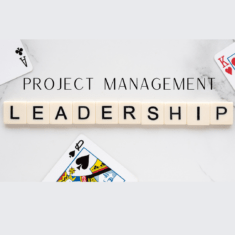
Following my first article on project management methodology, here I look at project management leadership styles.
There are two different broad approaches to project management, namely sequential models (e.g. waterfall model) and agile models (e.g. Scrum and DevOps).
Whatever model is used, a project requires leadership to ensure that all project resources are used harmoniously for the purpose of realizing the project’s aim.
Different leadership approaches include:
- the Contingency approaches (for example Situational Leadership Theory by Hersey and Blanchard), and
- Behavioral leadership models (for example Blake and Mouton’s Managerial grid).
Contingency Theory
The contingency theory of leadership assumes that a leader’s effectiveness is dependent on whether or not their leadership style suits a particular situation.
For example, an individual can be an effective leader in one situation, yet ineffective in another one. To help foster leadership, this theory says that you should examine each situation and decide if your leadership style is going to be effective or not. This requires self-awareness, objectivity, and adaptability.
Behavioral Leadership Theory
The behavioral leadership theory focuses on, obviously, behavior. Proponents believe that leadership traits can be copied by others. The theory also suggests that leaders can be created based on learnable behavior. The theory suggests that anyone is capable of becoming a good leader.
“W.C.H Prentice defined leadership as “the accomplishment of a goal through the direction of human assistants” and a successful leader as one who can understand people’s motivations and enlist employee participation in a way that marries individual needs and interests to the group’s purpose.“
So how does leadership relate to project management models? In light of the aforementioned definitions, the very fact that projects have a beginning and an end, a departure state, and a destination state mean that they necessitate leadership.
It begs the question, however, are certain leadership approaches more appropriate for some project management models than others?
For example, according to Farley in his research paper, Leadership in agile projects — what makes for success?, because agile projects inherently consist of a lot of change and require a lot of adapting to circumstances – such as IT projects - among the most appropriate leadership approaches for leading such projects stem from the behavioral approaches.
Contingency approaches are more applicable to traditional project management methodologies, such as in the construction industry.
It is reasonable to assume that project management models are indeed connected to leadership approaches. Each project, however, requires a unique analysis as to which leadership approach would be appropriate. It is complex to ascertain in a uniform way, with accuracy, which leadership approach would be best for a particular project management model. One reason for this is that there are so many variables in any project.
What can be said though is that a leadership approach matched with the project management model will most likely create a positive work culture and environment. A skill a project leader needs though is to recognize which style to adapt.
Sources:
Prentice, William C.H. “Understanding Leadership.” Harvard Business Review, 1 Aug. 2014.
Project Management Institute, Inc. A Guide to the Project Management Body of Knowledge, Sixth ed., Project Management Institute, Inc., 2017, pp. 2.
Farley, J. (2005). Leadership in agile projects — what makes for success? Paper presented at PMI® Global Congress 2005—Asia Pacific, Singapore. Newtown Square, PA: Project Management Institute.
Lumen, "Organizational Behavior / Human Relations," . .





